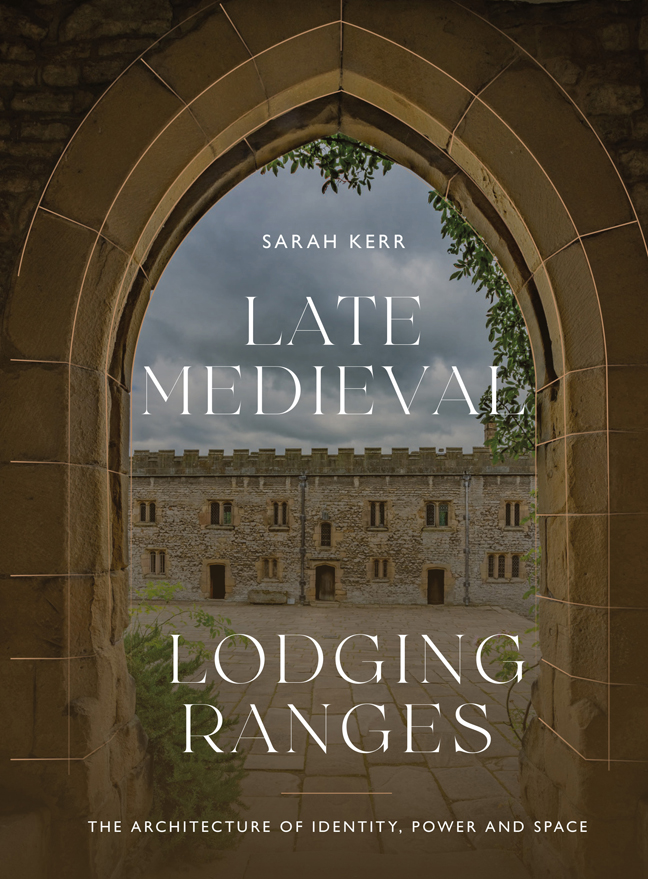Book contents
- Frontmatter
- Dedication
- Contents
- List of Illustrations
- Preface and Acknowledgements
- List of Abbreviations
- Introduction: What are Lodging Ranges?
- 1 A Room of One's Own
- 2 Expressions of Individuality and Collectivity
- 3 The Theatre of Display
- 4 The Spaces Between
- Envoi: Narratives in Stone and Space
- Glossary
- Gazetteer A
- Gazetteer B
- Bibliography
- Index
- Miscellaneous Endmatter
4 - The Spaces Between
Published online by Cambridge University Press: 21 February 2024
- Frontmatter
- Dedication
- Contents
- List of Illustrations
- Preface and Acknowledgements
- List of Abbreviations
- Introduction: What are Lodging Ranges?
- 1 A Room of One's Own
- 2 Expressions of Individuality and Collectivity
- 3 The Theatre of Display
- 4 The Spaces Between
- Envoi: Narratives in Stone and Space
- Glossary
- Gazetteer A
- Gazetteer B
- Bibliography
- Index
- Miscellaneous Endmatter
Summary
EXPLORING SPACE
The north-east corner of Middleham Castle, North Yorkshire, comprised an impressive gatehouse connected to a bridge crossing the moat. The doorway was surrounded by subtle articulation and led to the inner courtyard via a vaulted passageway. Within the passageway there were horizontal stone slabs running lengthways: benches. The gatehouse's stone narrative reveals its function and use. Its use was to allow entry into the courtyard. But what of the functions of the gatehouse, beyond the utilitarian? The benches suggest a pause in a journey; guests may have been delayed here before they were granted further access to the house, and some juridical activities may have taken place in the spacious vault. It was both a thoroughfare and a place which prevented access. There were cavities which held the portcullis and the wooden gates which would have secured the gatehouse. A distinction between outside and inside was created. The use of the gatehouse was to give access, but one could not walk through easily or unhindered. Its function was one of separation: access was granted for some, not all. The lived experience of the gatehouse takes shape.
It has been argued over the course of the previous chapters that the placement of lodging ranges within the great house was highly planned and deliberate. And, like the gatehouse, their functions were multi-faceted, practical and explicit in one sense but subtly persuasive in another. The layers of understanding derive not only from the fabric of the buildings, but also from the space in and around the stones. The space exists only because of the fabric and the fabric only makes sense because of the space. Fabric disrupts space as much as it encloses it. Therefore we should not separate one from the other in building analysis.
This chapter considers space more fully in the discussion of lodging ranges through the examples of Middleham Castle and Bishop's Waltham Palace. On visiting the sites today, they seem starkly different. While both are in ruins, Middleham appears better preserved due to its compactness. It seems that Middleham has more to tell the viewer due to the extent of the remains, whereas at Bishop's Waltham there are swathes of dandelion-dotted grass between the surviving sections. In the late medieval period, too, they would have looked rather different.
- Type
- Chapter
- Information
- Late Medieval Lodging RangesThe Architecture of Identity, Power and Space, pp. 179 - 210Publisher: Boydell & BrewerPrint publication year: 2023

